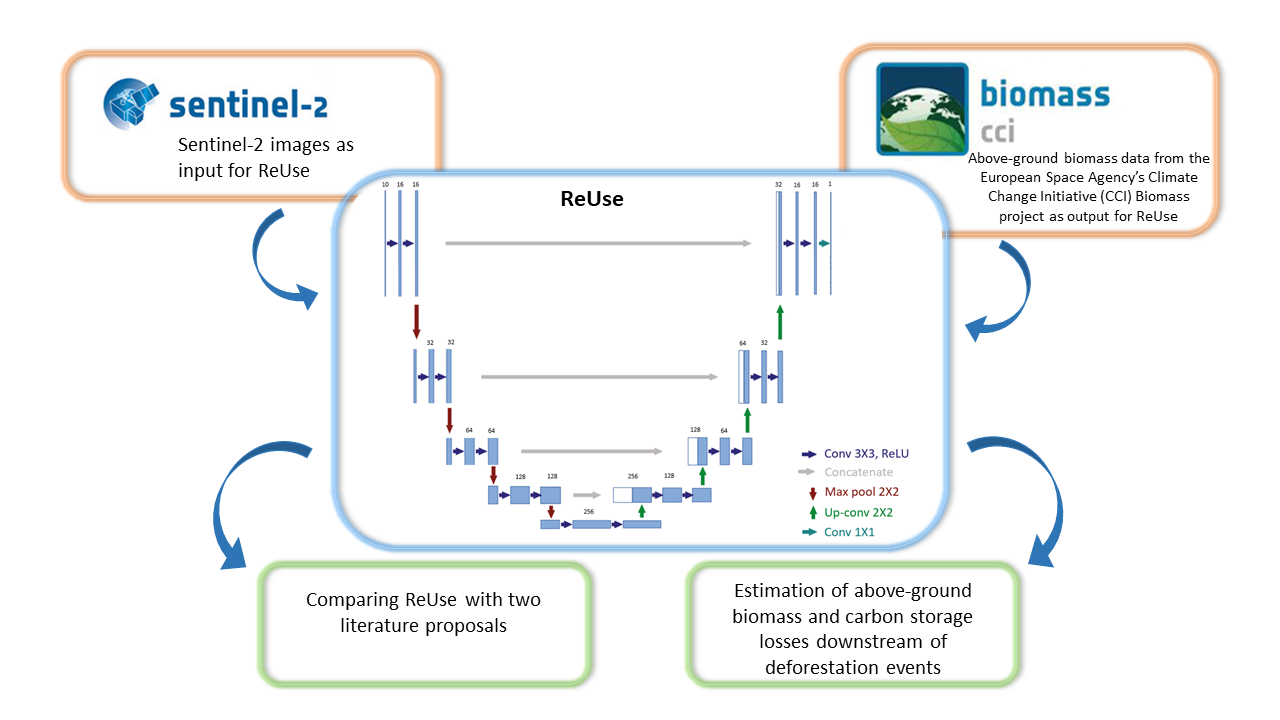United Nations Framework Convention on Climate Change (UNFCCC) has recently established the Reducing Emissions from Deforestation and forest Degradation (REDD+) program that requires countries to report their carbon emissions and sink estimates through national greenhouse gas inventories (NGHGI). Thus, developing automatic systems capable of estimating the carbon absorbed by forests without in-situ observation becomes essential. To support this important need, in this work we introduce ReUse, a simple but effective deep-learning approach to estimate the carbon absorbed by forest areas based on remote sensing. The novelty of the proposed method is in the use of the public above-ground biomass (AGB) data from the European Space Agency's Climate Change Initiative Biomass project as ground truth to estimate the carbon sequestration capacity of any portion of land on Earth using Sentinel-2 images and a pixel-wise Regressive UNet. The approach has been compared to two literature proposals, using a private dataset and human-engineered features. The results show a greater generalization ability of the proposed approach, with a decrease in Mean Absolute Error and Root Mean Squared Error, respectively, of 16.9 and 14.3 in the area of Vietnam and 4.7 and 5.1 in the area of Myanmar over the runner-up. Finally, as a case study, we reported an analysis made for the Astroni area, a nature reserve located near the metropolitan area of Naples in southern Italy, struck by a large fire, producing predictions consistent with values found by experts in the field. These results further support the use of such an approach for the early detection of AGB variations, both in urban and rural areas.

